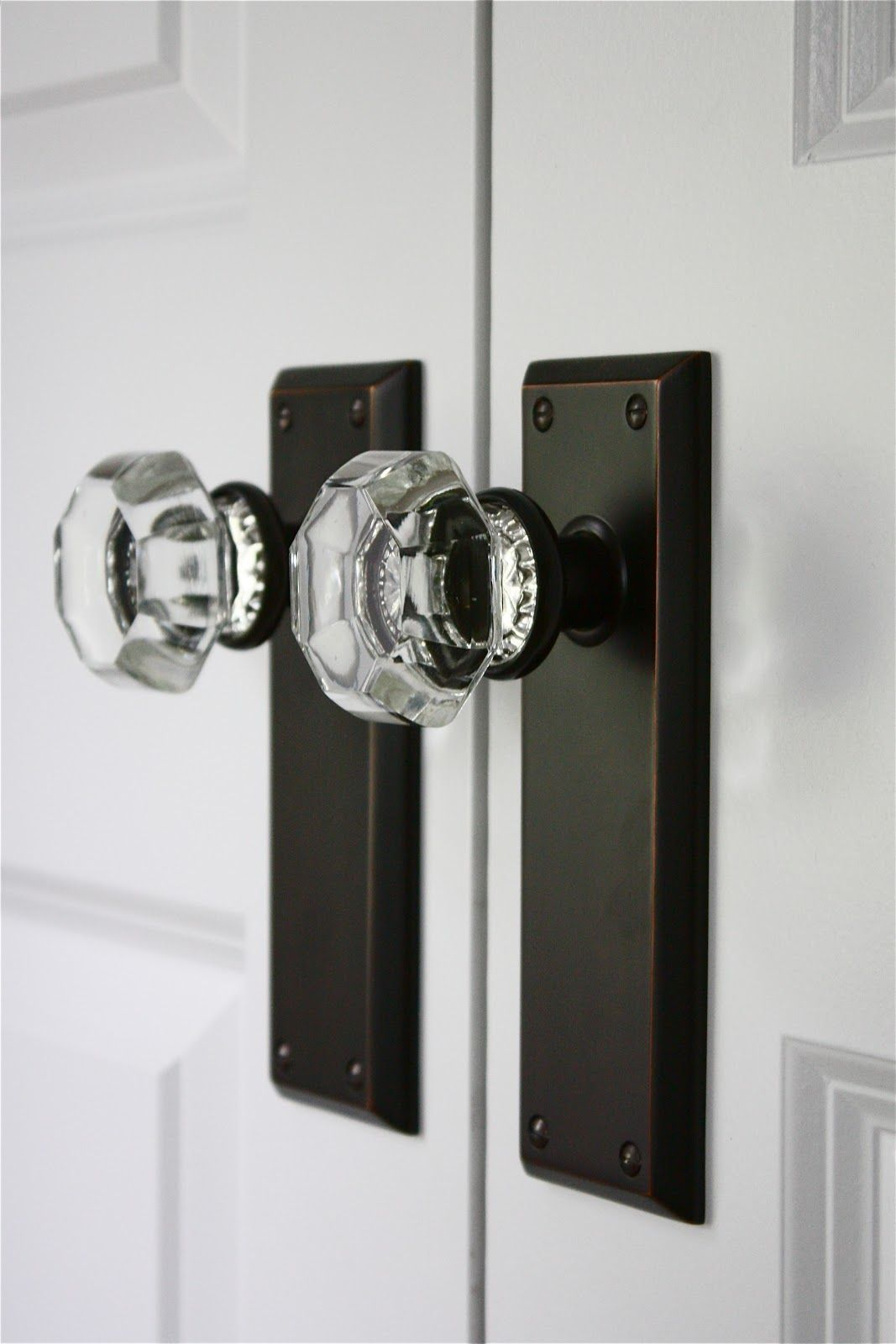Doorknob and Backplate Insights
Doorknobs are often overlooked in our homes but have a fascinating history and design evolution. This article will delve into the world of doorknobs and backplates to help you appreciate and care for these essential hardware elements.
Backplate Basics
Let’s examine the often-overlooked circular plate behind each doorknob, a backplate or rose. Originally, backplates served a functional purpose, concealing the hole drilled in the door for the lock or knob mechanism. Without a cover, this hole would be unsightly.
However, over time, backplates evolved to be not just functional but also decorative. They come in various materials, including brass, bronze, nickel, copper, glass, crystal, ceramic, and wood. While simple flat plates offer a subtle look, ornate decorative backplates complement intricate knob designs like those in Victorian or Art Deco styles.
Identifying Crystal vs. Glass Knobs
Vintage glass and crystal knobs are functional and add a touch of elegance and charm to your doors. However, distinguishing between the two materials can be valuable for collectors and enthusiasts. Here are some more detailed tips to help you identify crystal knobs from their glass counterparts:
1. Examine under Light
- Crystal: Crystal knobs are crafted from a harder material than glass. When you closely inspect a crystal knob under a light source, you’ll notice distinct cut facets and intricate etching on its surface. These facets and etchings create a sparkling and reflective play of light, adding to their overall beauty and sophistication.
- Glass: Glass knobs, on the other hand, typically lack the cut facets and intricate etching seen on crystal knobs. Instead, they have a smooth, unfaceted surface that reflects light more uniformly and subduedly. This lack of intricate detailing contributes to their simpler appearance.
2. Weight
- Crystal: Due to its greater density, crystal knobs will feel noticeably heavier when held in your hand. This weight difference results from the density disparity between crystal and glass. Crystal’s heavier feel can be an immediate indicator of its authenticity.
- Glass: Glass knobs, being less dense than crystal, will feel lighter when compared side by side with crystal knobs of similar size. The difference in weight can often be perceived through touch.
3. Silver Foil Backing
- Crystal: Authentic crystal knobs often feature a silver foil backing, which enhances the crystal’s refractive properties. This backing reflects and refracts light to create a dazzling, prism-like effect, amplifying the knob’s brilliance. This silver foil backing is a characteristic feature of genuine crystal knobs.
- Glass: Glass knobs typically lack the silver foil backing in crystal knobs. Consequently, their light refraction is less intense, resulting in a less vibrant display of colours and reflections.
4. Bubbles and Impurities
- Crystal: High-quality crystal is known for its clarity and purity. When you closely inspect a crystal knob, you should not observe any small bubbles, swirls, or impurities within the material. The absence of these imperfections is a hallmark of authentic crystal knobs and contributes to their overall transparency and brilliance.
- Glass: Glass knobs may exhibit small bubbles, swirls, or impurities within the material. These imperfections are common in glass production and indicate glass’s less pristine nature than crystal.
By applying these detailed observations and distinctions, you can confidently identify whether a doorknob is made of crystal or glass, allowing you to appreciate its unique qualities and historical value.
The Golden Age of Crystal Knobs
When did crystal doorknobs become popular? In the mid-19th century, advances in glassmaking allowed for mass crystal production at an affordable cost. This accessibility led to the widespread use of ornate crystal knobs during the Victorian period.
The peak era for crystal knobs was the Antique period, from around 1850 to the early 1900s. Installing an elegant crystal doorknob reflected the Victorian preference for decorative and ornate home embellishments. What was once a symbol of wealth became commonplace, even in modest homes.
Caring for and Restoring Vintage Knobs
To maintain vintage crystal or glass knobs:
- Use a gentle approach: Clean with mild soap and water, a specialized glass cleaner, or metal polish for brass or nickel shanks. Always test cleaners in an inconspicuous spot first.
- For loose or damaged knobs or shanks, consult a hardware restoration specialist who can expertly repair them.
- If the backplate is missing or irreparably damaged on your antique knob, companies like House of Antique Hardware can provide design-matched replacements to complete the authentic look.
In conclusion, doorknobs and backplates have a rich history and diverse styles. Next time you enter a room and grasp that doorknob, take a moment to appreciate its craftsmanship—you might discover a sparkling crystal treasure.

